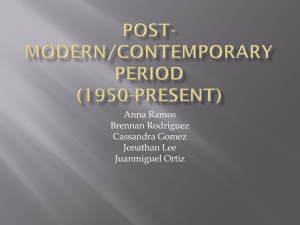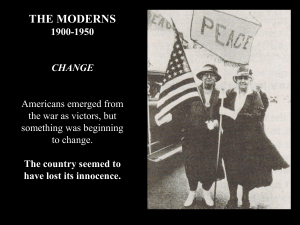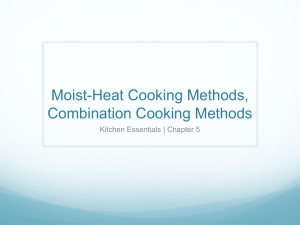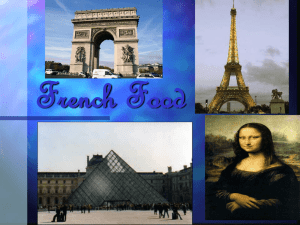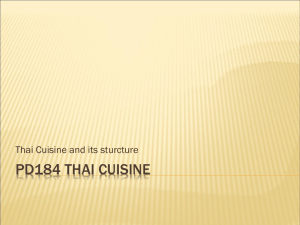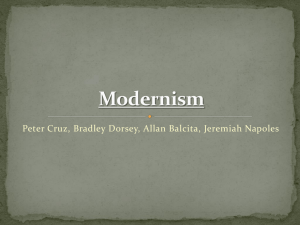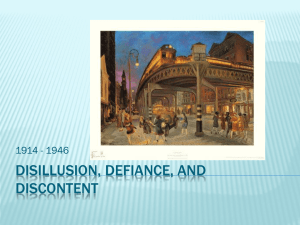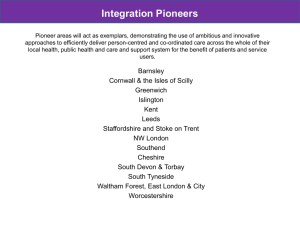Trends in Modernist Cuisine and the Inclusion of STEM Curricula in
advertisement
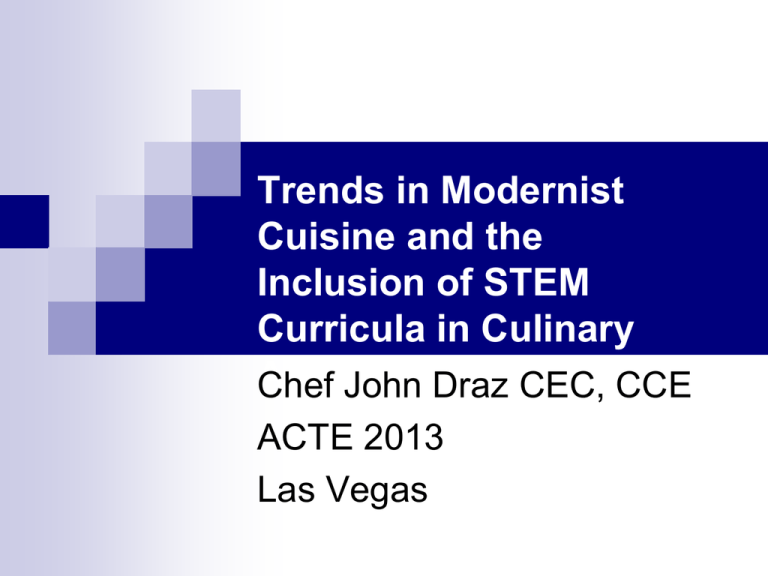
Trends in Modernist Cuisine and the Inclusion of STEM Curricula in Culinary Arts Programs Chef John Draz CEC, CCE ACTE 2013 Las Vegas Description In recent, years fine-dining restaurants and world class chefs have embraced technology and food science to create new and unique dishes and dining experiences. This trend places an unprecedented importance on science in the kitchen and can be used as an effective motivator for culinary students in their science and math studies. This session looks at three food preparation techniques popularized by this trend, their underlying science, and how they relate to topics in STEM curricula. Outcome Through this presentation, culinary instructors will gain new insight into the importance of science and technology in contemporary fine dining. They will learn which scientific principles are the basis for important modernist culinary techniques and how to connect them to science and math curriculum. John Draz CEC, CCE 15+ years teaching culinary arts Founding program chair, The Culinary School of Kendall College Co-author, The Culinary Professional © 2014, Goodheart-Willcox Publisher Currently, Research Chef, Ed Miniat, Inc. Board Member, Research Chefs Assoc. Connections Integrating STEM Relevance New Career Paths “ But I just want to cook”! What is Modernist Cuisine? A modern style of cooking, which takes advantage of many technical innovations from the scientific disciplines. AKA Molecular gastronomy Culinary physics Experimental cuisine Culinology® Pioneers of Modernist Cuisine Ferran Adria El Bulli, Roses, Spain 1983- 2011 “The father of molecular gastromony” Pioneers of Modernist Cuisine Heston Blumenthal The Fat Duck Bray, England Pioneers of Modernist Cuisine Pierre Gagnaire Paris, France Collaborates with chemist Herve This Pioneers of Modernist Cuisine Grant Achatz Alinea Chicago Pioneers of Modernist Cuisine Wylie Dufresne WD-50 New York Modernist Technique 1 Culinary Foams Foams are virtually a new form of sauce. Used as a complement to the main ingredient in appetizers, main courses and desserts, they deliver flavor with a unique texture. Foams deliver a dynamic contrast turning from light solid to liquid on the palate. Modernist Technique 1 Culinary Foams There are many forms of foam in the professional kitchen: Mechanically produced – meringue, whipped cream. Chemical reaction- baking soda, powder Biologically produced- bread, beer Charged with pressurized gas Creating Foam with a Charging Siphon CO2 - carbonation NO2 – fatty Ingredients Modernist Cuisine Charged Foams STEM Connections Physics gases and atmospheric pressure. density / viscosity of liquid being foamed Chemistry protein and fat content of liquid being foamed Engineering understanding equipment used for charging Math formulation percentages Modernist Technique 2 Spherification Gelling reaction of calcium chloride and alginate Calcium chloride blended with flavored liquid Deposited in an alginate solution Gel forms on the surface of the droplet encapsulating the flavored liquid Reverse process also used Modernist Technique 2 Spherification Size of droplets can create Caviar Olives Liquid ravioli Spherification STEM Connections Chemistry – reaction of calcium chloride and alginate (alginic acid) creates the gelatinous substance calcium alginate CaCl2 C12H14CaO12 C6H8O6 Physics Hydraulics Density of liquids Technology – use of functional ingredients in the kitchen Math – formulation percentages Modernist Technique 3 Sous Vide Cooking foods in a vacuum bag in a water bath Sous vide (pronounced Soo Veed) is French for “under vacuum” Extremely accurate temperature temperature control Capability of long cook cycles at low temperatures Modernist Technique 3 Sous Vide Two Step Process 1. Vacuum Sealing 2. Water Bath Cooking Modernist Technique 3 Sous Vide Meat and Poultry Low temperature = tenderization, moisture retention and even doneness Searing used to enhance flavor and appearance Modernist Technique 3 Sous Vide Vegetables / Fruits Delicate textures preserved. Liquid used to infuse flavor. Modernist Technique 3 Sous Vide Eggs Exact temperatures produce many textures Long holding times possible Sous Vide STEM Connections Physics Vacuum Heat Biology transfer Pathogen control Engineering/Technology Vacuum Cooking Equipment Temperature monitoring Math Charting Cook Cycles Other Techniques Freezing with liquid nitrogen Anti-griddle Dry ice carbonation Vacuum distillation Centrifuges Smoke guns Other Ingredients Hydrocolloids Gums Cold gel Emulsifiers Transglutaminase “meat starches glue” Flavor ingredients Extracts Oils Modernist Goes Mainstream Food Trucks featuring “MoGa” Pre-made “Fruit Pearls” Sous Vide in Fast Casual Restaurants Chipotle Mexican Grill Panera Liquid Nitrogen Ice Cream chain Resources - Print Modernist Cuisine:The Art and Science of Cooking by Nathan Myhrvold, Chris Young, Maxime Bilet Modernist Cuisine at Home On Food and Cooking: The Science and Lore of the Kitchen by Harold McGee The Curious Cook Resources - Media Good Eats Alton Brown Food Network Fine Cooking http://www.finecooking.com/blog/food-geek Modernist Cuisine Made Easy http://www.modernistcookingmadeeasy.com/ Science of Cooking http://www.scienceofcooking.com/ Serious Eats The Food Lab http://www.seriouseats.com/the-food-lab/ Youtube – “molecular gastronomy” = 36,700 Resources - Organizations Research Chefs Association Approved Culinology® Programs http://www.culinology.com Institute of Food Technologists Student Association Scholarships http://www.ift.org/community/students/about-iftsa.aspx ? Questions Comments Anecdotes Observations Thank You !
